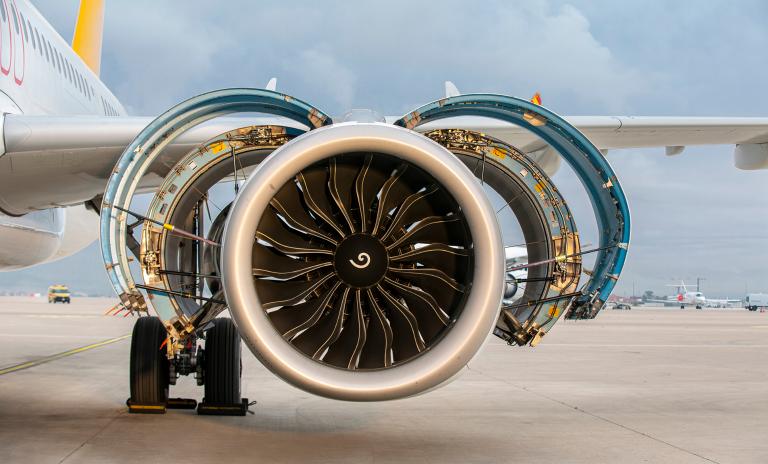This podcast episode explores the complexities of the aviation business, discussing how to maintain operational efficiency and move forward.


Reality check for sustainable airline growth
By Florian Dehne and Dustin Herr
Aviation is set for continued growth, but airlines face numerous challenges to financial prosperity
The aviation industry approaches several remarkable milestones in 2025: for the first time, it is set to welcome 5.2 billion passengers, while revenues are expected to surpass USD 1 trillion. However, despite these record-breaking figures, airlines are facing mounting financial pressures from multiple fronts.

Fuel and labor a dominant cost drivers
While the price of crude oil currently is comparable low with around 70-89$ which brings a certain relaxation on the cost side for airlines, jet fuel prices are projected to rise back to USD 115 per barrel mid-term, making fuel the second-largest operational expense. Labor costs have surged to 31% of operational costs. The sharp rise in labor costs, which averaged 7.3% in 2023, poses a significant challenge for airlines that struggle to pass these expenses onto customers. As a result, airlines are projected to earn only USD 7 per passenger in 2025, culminating in a slim net profit margin of just 3.6% globally, according to IATA.
"Airlines need to adopt modern retailing much faster enhancing ancillary revenue streams to maintain profitability."
The supply chain crisis crippling fleet expansion
One of the most pressing issues facing the aviation sector today is a supply chain crisis that severely limits fleet expansion, which remains unsolved in the aftermath of the Covid pandemic. The backlog of unfilled aircraft orders has soared to a staggering 17,000 planes according to Boeing, and current production rates indicate it could take up to 14 years to fulfill these orders – twice the average backlog seen between 2013 and 2019. This bottleneck has created significant challenges for airlines looking to accommodate increasing passenger numbers.
These ongoing delivery delays have led to many carriers lowering their passenger traffic estimates for the coming years. Meanwhile, a sharp decline in aircraft deliveries is compounding the issue. Rates have dropped from a peak of 1,813 in 2018 to just 1,254 expected in 2024 – 30% below earlier predictions.
Reasons are manifold, including a lack of supply chain transparency, missing resources and lack of industrial resources, as well as poor supply delivery quality. While OEMs and MRO companies are trying to secure delivery and work on supply chain resilience, tariffs in a global industry such as aviation will not help increase supply chain stability.
Of course, companies with predominantly local-for-local production footprints and supply chains seem less affected by current global disruption. However, most supply chains are global, so earlier order commitment, via contractually binding fixed orders, for example, as well as forward-looking visibility to ease upstream financing, would enable inventory build-up. AI supply chain solutions to support risk management and the management of critical elements such as demand sensing or planning can also improve matters.
Aging aircraft and rising maintenance costs
A further impact of aviation’s supply chain issues is an increasingly aging fleet: the average age of aircraft has crept up from 13 years in 2018 to 15 years in 2023, leading to rising maintenance costs. Airlines now have approximately 5,000 aircraft, or 14% of the global fleet, in a “parked” status – four percentage points above pre-pandemic levels.
As airlines struggle to keep their aging fleets in service, they face rising costs associated with more frequent inspections and parts replacements. The financial burden is significant, with maintenance costs averaging EUR 0.95 million (USD 1.08 million) per year for each aircraft, according to IATA’s maintenance cost report. This creates operational inefficiencies, further squeezing already thin profit margins.
Rather than retaining old aircraft during a growth phase, airlines should consider placing greater emphasis on consolidation by replacing older aircraft with newer ones. Additional revenues from a larger fleet are unlikely to match the additional costs of an aging fleet.
_image_caption_none.png?v=1406637)
Commercial outlook: revenue, growth rates, and yields
Despite the challenges, the commercial side of aviation offers a promising outlook. Projected revenues are expected to exceed USD 1 trillion in 2025 and the industry is set for a compound annual growth rate of around 4-5% in the coming years. This growth will be driven primarily by the resurgence of leisure travel, which is forecast to outpace business travel recovery.
However, yield development is likely to come under significant pressure, particularly outside the summer travel season. We predict off-peak and shoulder periods will see lower yields with airlines facing increasingly intense competition and consequently pricing pressures.
In line with other industry analysts, we project stable or slightly increased yields overall, with the potential for a 2-3% decline in shoulder and off-peak seasons in 2025/2026. In particular, we expect a higher yield decline on the Europe-North Atlantic routes over the coming months. This disparity highlights the need for airlines to adopt more dynamic pricing strategies and enhance their ancillary revenue streams to maintain profitability.
Workforce shortages threaten operational stability
These aren’t the only challenges facing aviation. A severe workforce shortage is threatening operational stability across all roles. According to Boeing's 2018 Pilot & Technician Outlook, the industry will need 800,000 new pilots by 2039, effectively doubling the current workforce. North America, in particular, is already experiencing a shortfall of 8,000 pilots, a figure that is projected to worsen over the next decade.
The maintenance technician shortage is equally alarming, with a projected need for 716,000 new technicians globally over the next 20 years. In the United States, the current technician shortage stands at 9% and could reach 20% by 2028, as half of today’s technicians plan to retire in the next 10-15 years.
In a world of global accessibility and low-fare carriers, jobs in the aviation industry are no longer as attractive as they were 15-20 years ago. The perks of cheap standby tickets have now been matched by low-fare carriers, while working hours are shift-driven, limiting their appeal. With many airports based in the outskirts of cities, requiring a substantial commute, jobseekers may simply look elsewhere.
Infrastructure constraints limiting growth potential
In addition to workforce and operational challenges, the aviation industry is constrained by infrastructure limitations. Major airports are struggling to keep pace with rising passenger numbers, and by 2040, approximately 160 million passengers may find themselves without adequate airport capacity.
The Airports Council International estimates that the industry will require EUR 2.29 trillion (approximately $2.4 trillion) in capital investments through 2040 to avoid severe congestion and support growth. High-growth regions, particularly in Asia-Pacific, will need the largest share of this investment to meet demand.
How to secure a prosperous future
Aviation stands at a crossroads. While the industry looks set for continuous growth over the next decade, it also faces some daunting challenges. From supply chain backlogs and workforce shortages to rising operational costs and infrastructure limitations, the path to sustainable growth requires immediate action from industry leaders and policymakers.
Reducing complexity is an important step. For airlines, active data management can create transparency and cohesion in business and operational processes, customer servicing, and cost management. AI and machine learning will eventually become part of the solution, but development remains slow.
It is crucial for airlines to invest in customer-centricity, for example by enhancing their retail – like offers and new distribution strategies to boost revenues. Investing in order management will reduce administration costs and better service customers.
The industry must also invest in its people. Targeted training programs should help address workforce shortages, while attractive working conditions are vital for maintaining operational stability and service quality.
Furthermore, stakeholders must prioritize infrastructure investments to ensure airports can accommodate growth. The projected $2.4 trillion investment gap cannot be ignored.
Collaboration is paramount to maximizing the effectiveness of these measures. Airlines, airports, suppliers, OEMs, regulators, and governments must work together to tackle aviation’s most pressing challenges and secure a prosperous future for the industry.
Register now to receive regular insights into our Transportation, Tourism and Logistics topics.




_tile_teaser_w425x260.jpg?v=938618)

